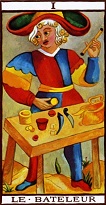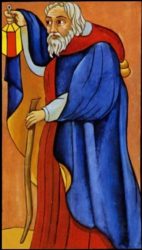It is risky to attribute the views of the Anthroposophic Tomberg to the Catholic Tomberg since the Meditations are the best way to know the author. He himself wrote:
“No matter what other source he might have, he will know the author better through the Letters themselves.”
Nevertheless, his conversion was never a complete rejection of his past, since his earlier thinking permeates the meditations. So concepts and ideas from the early writings that are recapitulated in the Meditations are well worth exploring. In the article titled H.P. Blavatsky’s “Secret Doctrine” and Rudolf Steiner’s “Outline of Esoteric Science”, Tomberg explains the concept of Practical Monism.
First he points out the principle that the Will follows the Intellect. That is why sound doctrine and knowledge are so important. Eventually, he writes, “all thinking sooner or later becomes willing”. Doctrines that force a one-sided choice, particularly if it is contradictory to one’s disposition, offer no viable path. As an example, he points to the Secret Doctrine as forcing the choice between spirit or matter. Tomberg explains:
The practical consequences of this choice are contradictory to the disposition of European people, for they do not actually have a tendency toward one-sidedness… For this reason the Secret Doctrine contains no description of a path of initiation intended to be put into practice. And Madame Blavatsky, in other places on this subject, tries to show the European reader how it is actually hopeless for him to take up the path of Eastern occultism. For that, he would, as a first step, have to give up his whole European nature, because it is, as such, a hindrance.
He then defines Practical Monism: the practice of the monistic “not only — but also” instead of the dualistic “either — or“. Practical monism is actually a threefoldness rather than a duality. Thus it joins two opposites into a third element. He writes:
Knowledge and action are joined together by the cosmic love principle — making possible the transformation of knowledge into action.
In the Letter on Justice, Tomberg reiterates this point:
And the love of God? It is this third, essentially Christian, principle which has held the balance through the course of centuries … Insofar as there is peace at the heart of Christianity, it is due only to the principle of the supremacy of love.
There are many applications of the Principle of Practical Monism in the Meditations. For example, there is the reconciliation of realism and nominalism. In the Letter on the Hermit, he adds the duality of idealism and realism, as well as faith and empirical science. Hermetism, then, is the “threefold synthesis” of these antinomies. Of course, there is the reconciliation of pagan intellectuality and Jewish prophetic spirituality through the crucified Christ.
In his essay, Tomberg explains that a spiritual path intended only for those of particular tendencies would be senseless. The path of Practical Monism:
can be trodden by anyone. It appeals to that in a man which strives after the transformation of the ‘lower’, the darkness, into the ‘higher’, the light filled. On this path both poles of human nature are taken into account: what is still to be transformed is here just as valuable as what is already transformed.
In the original essay, Tomberg contrasts Rudolf Steiner’s book Esoteric Science to the Secret Doctrine. The former book, he says, it suitable for European man because it recognizes the Christ impulse that synthesizes the matter-spirit duality in the latter book.
Tomberg concludes the essay with an important principle. In any doctrine, he explains,
we must ask not only about the truth told therein, but also about the completeness of that truth. For incomplete truths can lead the whole practical striving of a person down a blind alley. Therefore, when considering occult writings we must ask: What follows from this for life?
All too often, in perpetual debates that never get resolved, that question is overlooked: what difference does it make for life? Tomberg concluded that Esoteric Science was superior to the Secret Doctrine. We can surmise that at some point, Tomberg came to the realization that Anthroposophy was still an incomplete answer to the question for life. Hence, he must have seen that the Roman religion was a better answer. In other words, with his conversion, life goals opened up for him.


